Welcome to our blog, where we delve into the fascinating world of Dairy Sheep Farming: Raising from Scratch for Breeding to Marketing. If you’ve ever wondered about the intricacies of starting a dairy sheep farm and successfully bringing your products to market, you’ve come to the right place. In this article, we’ll walk you through the entire process, from acquiring your first sheep and setting up the necessary infrastructure to breeding for optimal milk production and marketing your dairy products to eager customers.
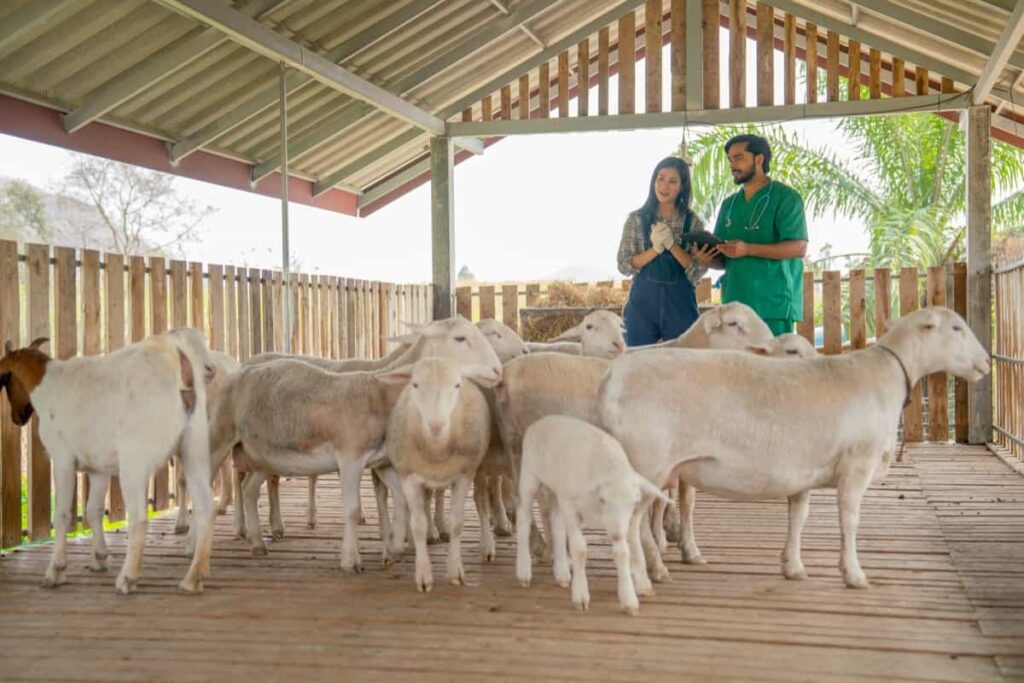
Dairy Sheep Farming for Beginners
- Selecting the right breed: Research and select a breed known for its milk production. Popular dairy sheep breeds include East Friesian, Lacaune, and Awassi.
- Farm setup: Create a suitable environment for your sheep by providing adequate pasture, clean water sources, and secure fencing. Ensure proper ventilation in the barn to maintain healthy living space.
- Feeding and nutrition: Develop a balanced diet for your sheep consisting of quality forage, hay, and grain supplements. Recommened a nutritionist or veterinarian to ensure the optimal diet for maximum milk production.
- Breeding program: Establish a breeding program to maintain a productive flock. Monitor the reproductive cycles of your ewes and introduce a ram during the breeding season.
- Milk production and handling: Learn proper milking techniques and establish a hygienic milking routine. Invest in milking equipment, such as a milking machine, and implement appropriate milk handling and storage practices.
- Marketing and selling dairy products: Explore potential markets for your dairy products, such as cheese, yogurt, or milk. Develop a branding strategy and partner with local retailers or farmers’ markets.
Best Dairy Sheep Breeds for High Milk Production
- East friesian: Known for its exceptional milk production, the East Friesian breed is considered one of the best for dairy purposes. They have high milk yields and can produce rich, flavorful milk with high butterfat content.
- Lacaune: Originally from France, Lacaune sheep are renowned for their adaptability to various climates. They are excellent milk producers, known for their high milk solids content, making them ideal for cheese and yogurt production.
- Awassi: This breed is native to the Middle East and is valued for its high milk production, resilience, and ability to thrive in arid environments. Awassi sheep yield milk with a high protein content, making it suitable for various dairy products.
- Sarda: Originating from Sardinia, Italy, the Sarda breed is highly regarded for its milk production and quality. They have good fertility rates and can produce milk with high butterfat and protein content, making it ideal for cheese-making.
Dairy Sheep Farming Techniques and Management Practices
Breeding practices in dairy sheep farming can significantly impact milk production and flock development. Purebred or high-percentage dairy ewes generally produce more milk but are more expensive. An alternative approach is to mate domestic ewes, either purebred or crossbred, with a high percentage of East Friesian or Lacaune rams, gradually increasing the dairy percentage of the flock over time. However, this method requires a longer time frame to achieve a high percentage of dairy flocks and may affect profitability in the initial years.
Dairy ewes possess specific traits that contribute to their productivity. They have a mature body weight ranging from 150 to 190 pounds and reach their full size within 2 to 3 years. The productive life span of a dairy ewe is typically 5 to 7 years. Wool production averages between 3 to 10 pounds per year. Regarding milk composition, dairy ewes have a fat content of 6-8% and a protein content of 5-7%.
Sheep are seasonal breeders, with mating occurring from August to December under natural light conditions. The gestation period lasts approximately 147 days, resulting in lambs being born from January to May. Ewes can have their first set of lambs at either 1 or 2 years of age, as lambs can reach puberty in 7 to 10 months.
During lactation, dairy ewes produce milk from lambing until the fall when the day length decreases, and milk production decreases accordingly. The dry-off, or cessation of milk production, occurs by the end of September or early October. Dairy ewes have a longer lactation period than non-dairy ewes, ranging from 120 to 240 days, increasing their milk yield per year.
Facilities for dairy sheep farming should include a barn or shed to accommodate the ewes during lambing. Adequate space of 15 to 20 square feet per ewe is required, along with proper ventilation to prevent drafts. The choice of lambing season, such as spring or winter, depends on factors like feed availability, cost, and overall milk production goals.
Spring lambing offers the advantage of reduced feed costs due to pasture growth coinciding with the nutritional requirements of lactating ewes. However, the lactation period is shorter, lasting at most 150 days. Conversely, winter lambing favors milk production as ewes increase feed intake in cool weather. Lactation length extends to 200 to 240 days but requires more stored feed and suitable lambing facilities.
In case you missed it: How to Start Sustainable Sheep Farming: Benefits and How to Reduce Your Carbon Footprint with Sheep
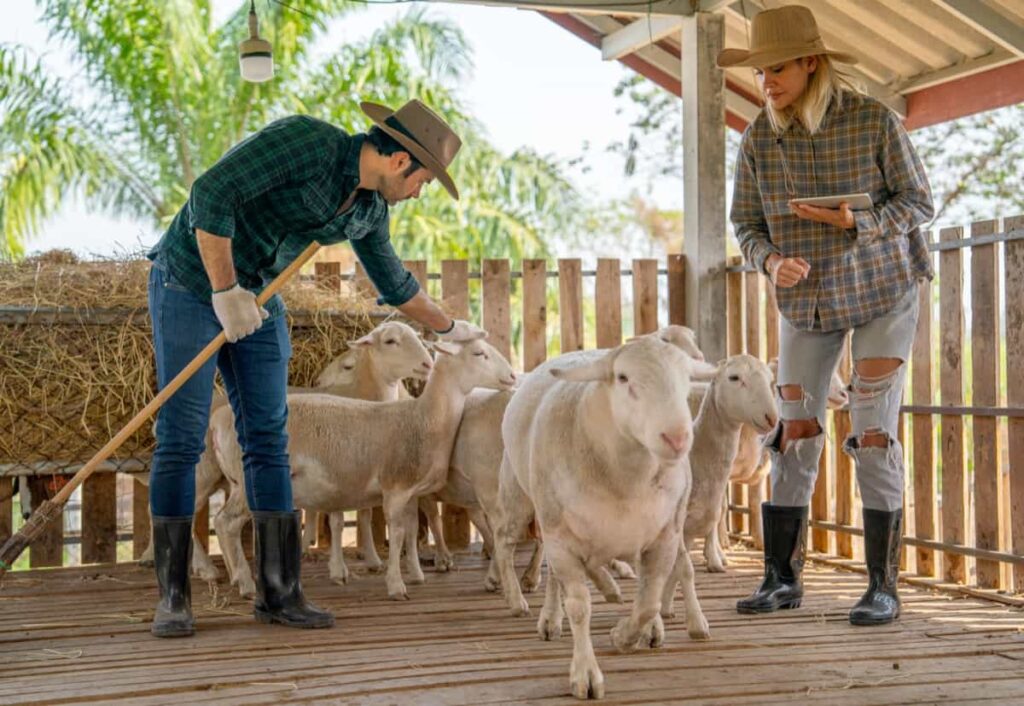
Year-round milking can be achieved by coordinating two groups of animals: one lambing in winter and the other in fall. This system optimizes milking equipment and parlors, reducing the need for additional equipment. For successful spring breeding, hormone or light treatments may be necessary, as sheep do not naturally exhibit estrus during that season.
Starting a Profitable Dairy Sheep Farm: Tips and Considerations
- Market demand: Research the demand for dairy sheep products in your area. Determine if there is sufficient demand for sheep milk, cheese, yogurt, or other products.
- Breeding and genetics: Select dairy sheep breeds known for high milk production and quality. Consider factors like breed suitability for your climate, disease resistance, and genetic potential for milk production.
- Infrastructure and facilities: Create suitable infrastructure and facilities for your dairy sheep farm. This includes barns or sheds for lambing and milking, adequate fencing, and proper ventilation for the well-being of the sheep.
- Feeding and nutrition: Develop a comprehensive feeding and nutrition program for your sheep. Consult with a nutritionist to ensure the optimal diet for milk production, including access to quality forage, hay, and supplemental feed.
- Milking equipment and practices: Invest in appropriate milking equipment, such as a milking machine, and establish proper milking practices to ensure milk quality and hygiene. Train yourself or your staff in proper milking techniques.
- Health and veterinary care: Establish a health and veterinary care program for your sheep. Regular vaccinations, deworming, and routine health checks are crucial to prevent diseases and maintain the well-being of your flock.
- Marketing and sales: Develop strategy to promote and sell dairy sheep products. Establish connections with local retailers, farmers’ markets, or restaurants that value high-quality dairy products.
- Financial planning: Create a detailed financial plan, including initial investment costs, ongoing expenses, and projected revenue. Consider sheep acquisition, feed costs, labor, and marketing expenses.
In case you missed it: Sheep Farm Operations Management: Month-Wise Maintenance For Better Profits
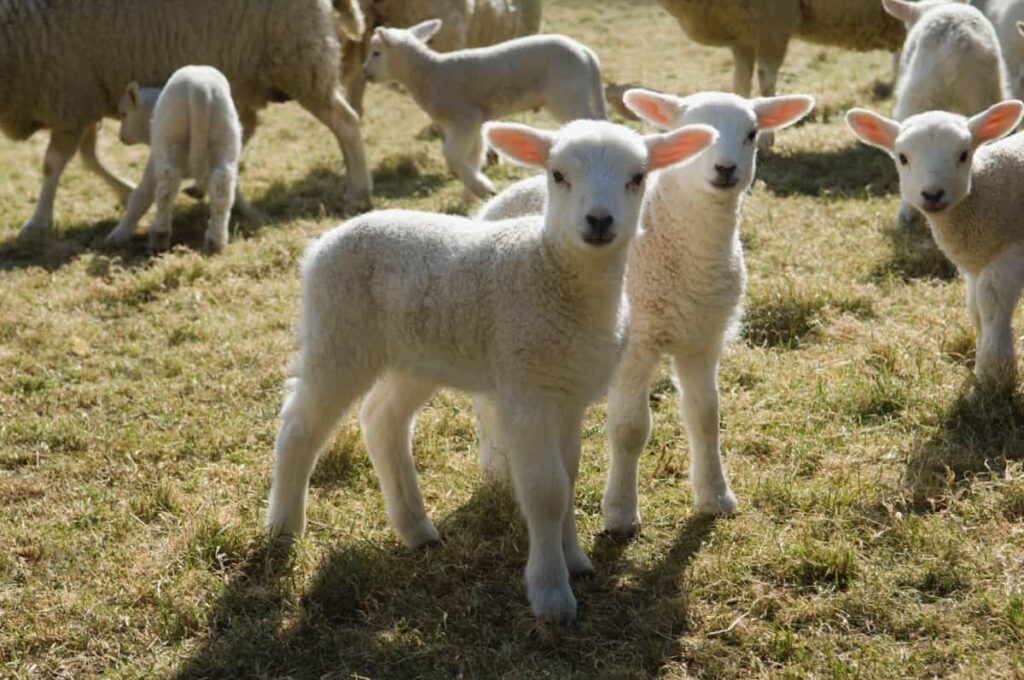
Optimal Nutrition and Feeding Regimen for Dairy Sheep
- Forage quality: High-quality forage forms the foundation of a dairy sheep’s diet. Provide access to fresh, clean pastures with various grasses, legumes, and herbs. Monitor pasture quality regularly to ensure it meets the nutritional needs of the sheep.
- Supplementary feeding: Besides pasture, dairy sheep may require supplementary feed to meet nutritional requirements. This can include hay, silage, grains, and concentrated feed specifically formulated for dairy sheep.
- Energy and protein: Dairy sheep require adequate energy and protein for optimal milk production. The diet can offer energy-rich feeds like grains and concentrates, while protein sources such as soybean meal or alfalfa pellets can be included.
- Mineral and vitamin supplementation: Ensure dairy sheep access a balanced mineral and vitamin supplement. These supplements should contain essential minerals like calcium, phosphorus, and magnesium trace minerals such as copper, zinc, and selenium.
- Water availability: Fresh, clean water should be available at all times. Dairy sheep have high water requirements, especially during lactation.
- Feeding management: Monitor feed intake and adjust the ration accordingly to meet the changing nutritional needs of the sheep throughout lactation and gestation. Work with a nutritionist or veterinarian to develop a feeding plan tailored to your specific flock’s needs.
- Feeding frequency: Dairy sheep generally benefit from multiple feedings per day. Splitting the daily ration into two or three feedings helps maintain consistent nutrient intake and supports optimal rumen function.
Common Health Issues in Dairy Sheep Farming and Preventive Measures
- Vaccinations: Lambs and ewes should receive vaccinations against common diseases like overeating and tetanus. Ewes should be vaccinated before lambing to provide passive immunity to newborn lambs.
- Abortion diseases: Ewes can be vaccinated against abortion diseases to prevent the loss of pregnancies. Regular monitoring is important to identify any potential issues.
- Caseous lymphadenitis (CL): CL is a disease that causes abscessed lymph nodes and can harm milk production. Ewes should be monitored for CL, and appropriate measures should be taken if the disease is detected.
- Internal parasite control: Regular treatment for internal parasites, especially while on pasture, is essential for lambs and ewes’ overall health and well-being.
In case you missed it: The Ultimate Guide to Sheep Vaccination Schedule: Deworming Chart/Calendar
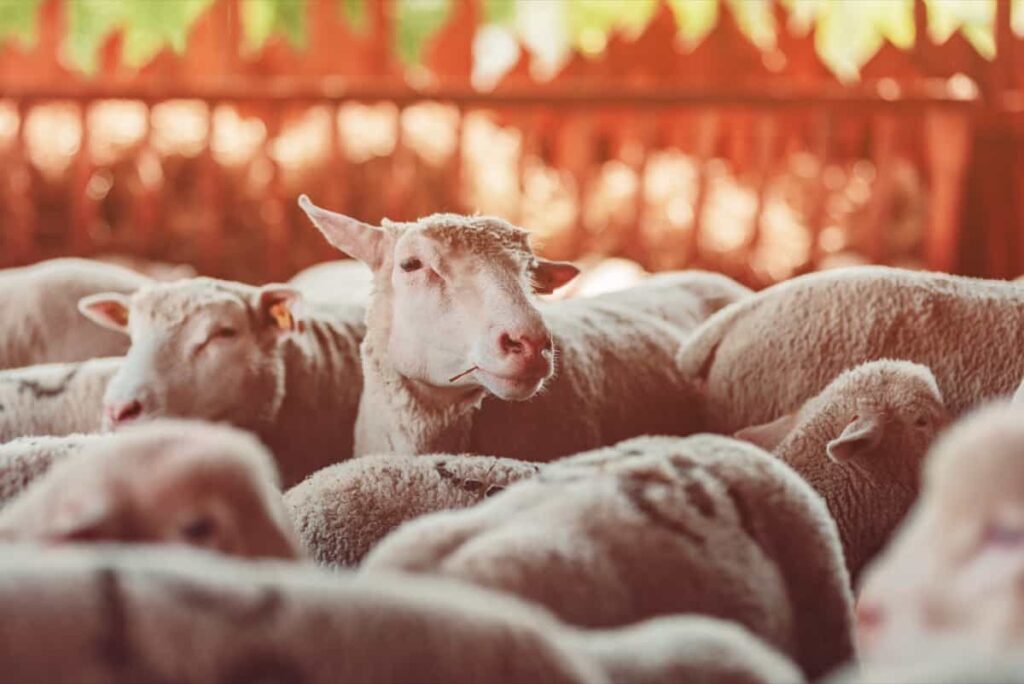
Breeding Strategies for Improving Milk Production in Dairy Sheep
- Selecting superior genetics: Choose breeding stock with high milk production potential. Look for traits such as high milk yield, good udder conformation, and strong maternal instincts.
- Utilizing performance records: Use performance records to identify animals with superior milk production genetics. These records provide valuable data on milk yield, composition, and other relevant traits.
- Implementing selective breeding: Selectively breed animals with desirable traits to enhance milk production. This involves pairing high-performing ewes with rams known for transmitting favorable milk production genetics to their offspring.
- Incorporating crossbreeding: Crossbreeding can introduce hybrid vigor and improve milk production in the offspring. Consider crossing dairy sheep breeds known for high milk production with other compatible breeds.
- Emphasizing milk quality: Alongside milk quantity, focus on improving quality traits such as fat and protein content. This can be achieved by selecting animals with desirable milk composition genetics.
- Utilizing artificial insemination (AI): AI allows access to superior genetics from distant locations. It allows the breeding of ewes with high-quality semen from rams with exceptional milk production traits.
Market Opportunities for Dairy Sheep Milk and Cheese Products
The dairy sheep milk and cheese products market presents promising opportunities for farmers. Sheep milk is highly nutritious, rich in protein, calcium, and vitamins, and is considered a specialty product with unique flavors. It is in demand among consumers who appreciate its creamy texture and distinct taste.
Additionally, sheep milk cheese, such as feta, pecorino, and Roquefort, enjoys a strong market presence due to its exceptional flavor. The market for dairy sheep products often targets niche markets, including gourmet and specialty food stores, restaurants, and farmers’ markets, where consumers are willing to pay a premium for high-quality, artisanal products.
Practices and Operations Management for Dairy Sheep Farming
Breeding practices: Breeding purebred or high percentage dairy ewes with purebred or crossbred domestic ewes with East Friesian or Lacaune rams gradually increases the dairy percentage of the flock. This process takes time and may impact initial profitability.
Lactation: Dairy ewes produce milk from lambing until the fall, when milk production decreases. Domestic ewes lactate for 90 to 150 days, while dairy breeds lactate for 120 to 240 days, increasing milk yield per ewe per year. Some ewes may not be able to be milked due to breeding, lambing, or mastitis issues.
Lamb Management Systems
- Day-1 system: Lambs are separated from their mother within 24 to 36 hours after lambing and raised on milk replacer.
- Day-30 system: Lamb’s nurse for 30 days, then completely weaned, and ewes are milked twice daily.
- MIX system: Lambs are separated from ewes in the evening, milked in the morning, and returned to their lambs during the day.
Nutrition: Ewes require 3-4% of their body weight in dry matter daily. Feed options include pasture, hay, silage, and concentrates. Sheep are effective grazers and can meet their forage requirements from pasture.
Milking facilities and equipment: Provide adequate clean water and a mineral mix. Lambs are fed high-energy and high-protein creep feed. Milking facilities include an elevated milking platform or a pit parlor, with necessary equipment such as a vacuum pump, milking claws, and buckets. Milk quality is important for shipping or consumption.
In case you missed it: Dorper Sheep Farming in Kenya: Raising From Scratch for Breeding to Marketing
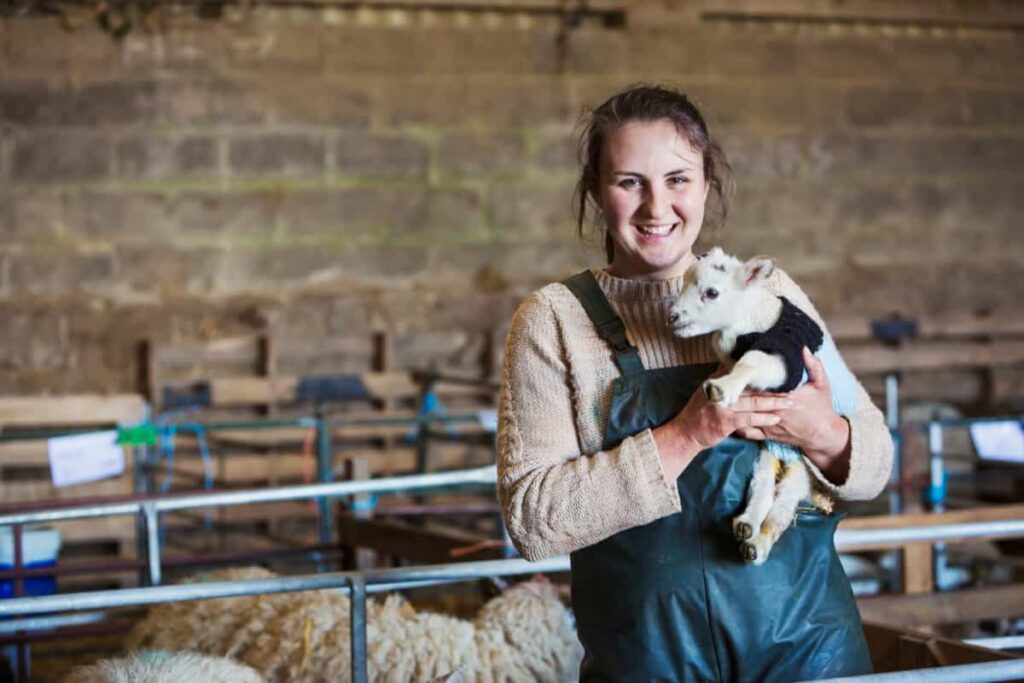
Health and care: Monitor ewes for mastitis and follow treatment plans approved for lactating animals. Sheep health care considerations are similar to those for meat and wool production.
Conclusion
Dairy sheep farming, from breeding to marketing, requires careful planning, management, and attention to detail. With proper practices in breeding, nutrition, health care, and marketing strategies, farmers can establish a profitable and sustainable dairy sheep operation.
- Effective Fish Pond Construction Techniques for Beginners
- Irrigation and Water Management in Pineapple Farming
- Blossom to Harvest: Mastering Flowering and Pollination in Papaya Farming
- Pig Fattening Essentials: From Selection to Sale for Beginners
- Raising Wagyu Cattle: A Complete Guide for Premium Beef Production
- Soil Types and Their Water Holding Capacity
- Optimizing Irrigation Schedules for Coconut Groves for Enhanced Yield
- Espresso Your Garden: Coffee Grounds for Healthier Acid-Loving Plants
- The Best Soil Mix for Snake Plants: How to Mix Your Own Snake Plant Soil
- Green Thumb Success: Expert Tips for Cultivating Greenhouse Beans All Year Round
- Bloom All Year Round: The Ultimate Guide to Indoor Hyacinth Care
- Eco-Friendly Gardening: How to Make Liquid Fertilizer from Kitchen Waste
- Ultimate Guide to Grow Anise in Pots: Explore Seed Propagation to Harvesting
- Guide to Raising Chester White Pigs: Discover Breed Facts to Growth Management
- Mastering the Elegance: The Ultimate Guide to Weeping Cherry Tree Care, Planting, and Maintenance
- Ultimate Guide to Planting Garlic in Grow Bags: Growing Strategies for Beginners
- How to Fix Spider Plant Leaf-Related Problems: Natural and Organic Remedies
- 10 Reasons Why Your Tulsi Plant is Shedding Leaves: Home Remedies and Solutions
- Optimizing Growth and Yield: The Advantages of Palm Bunch Ash Fertilizer
- Utilizing Neem Oil Extract as a Natural Pesticide for Hydrangea
- From Soil to Harvest: Various Ways in Which Farmers Can Use AI Tools
- Steps to Encourage and Induce Citrus Flowers: A Comprehensive Guide
- How to Fix Snake Plant Leaf-Related Issues: Natural and Organic Remedies
- Transform Your Garden into a Fragrant Oasis with Raat Ki Rani (Night Blooming Jasmine)
- Discover the Ideal Chicken Breeds for Philippine Farms
- How to Create a Poultry Egg Farm Business Plan for Profits
- Grow Lemon Cucumbers Like a Pro: Insider Techniques for Bountiful Yields
- Ultimate Guide to Caring for Your Pink Princess Philodendron: Tips for Thriving Variegation
- Areca Nut Profit Per Acre: Calculating Yield and Cost of Cultivation
- How Kaveri Chicken is Becoming a More Profitable Breed in Indian Backyards
- Transform Your Barn: 9 Steps to Convert a Horse Stall into a Chicken Coop
- Exploring Suffolk Sheep Disadvantages with Limitations and Challenges
- Guide to Solving Potted Lemon Tree Problems: How to Revive Lemon Tree in Containers
- Steps to Encourage Female Pumpkin Flowers: Best Strategies for More Flowers and High Yields
- Ultimate Guide to Yellow Raspberries: Exploring from Planting to Care
- Ultimate Guide to Planting Ginger in Grow Bags: Growing Strategies for Beginners
